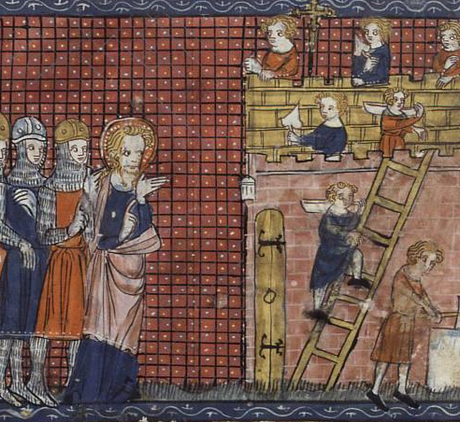
Saint Valentine of Terni oversees the construction of his basilica at Terni, from a 14th-century French manuscript. Photo via Wikimedia Commons (public domain.)
I spent a fair bit of my teen years reading Focus on the Family’s Brio, a now-defunct magazine aimed at teen girls as an alternative to Seventeen, YM, and other glossy periodicals whose vision of female adolescence involved the consumption of a great deal of clothes and makeup and the pursuit of the perfect prom dress–and perfect date to go with it.
While Brio was far more wholesome than the options available at every grocery checkout–on balance, I’m glad my parents kept my subscription active until I left for college–now that I’m grown I can see the ways in which Brio, and sources like it, filled my head with notions of romance that weren’t exactly biblical.
One feature article in Brio presented the biblical book of Ruth as a model of godly romance. Ruth waited for Boaz to take notice of her, so that particular interpretation went, and kept herself busy in the meantime, and God rewarded her by giving her a wealthy new husband and, not long after, a baby.
But later–after I’d finished a degree in biblical studies and married a man with several degrees in biblical studies–I realized that this reading of Ruth was all wrong. Ruth wasn’t waiting around for Boaz to notice her. She was busy taking care of her mother-in-law, Naomi. And when the time seemed right, Ruth proposed to Boaz.
This certainly wasn’t like anything I’d read in my Christian teen magazines.
{This is the beginning of my most recent post — on the history and meaning of Valentine’s Day — for iBelieve. Please go there to read the rest!}
